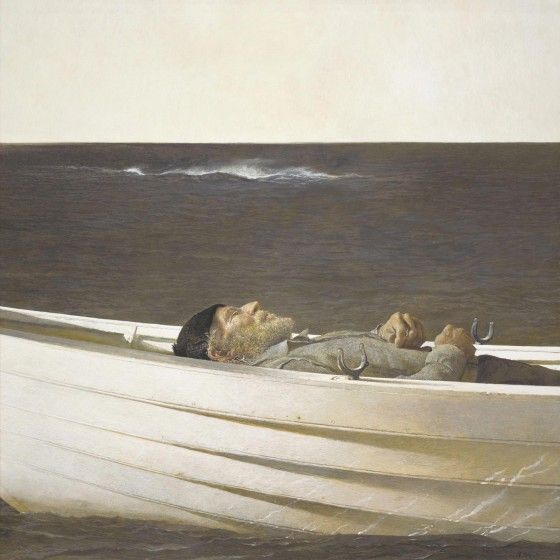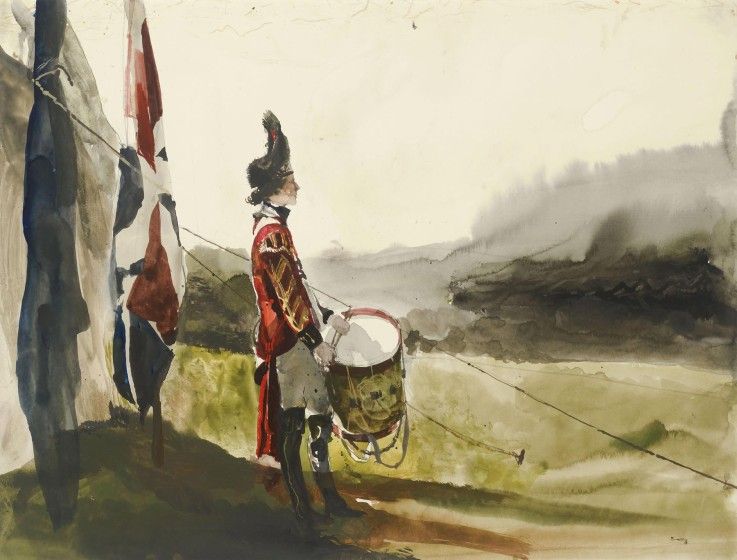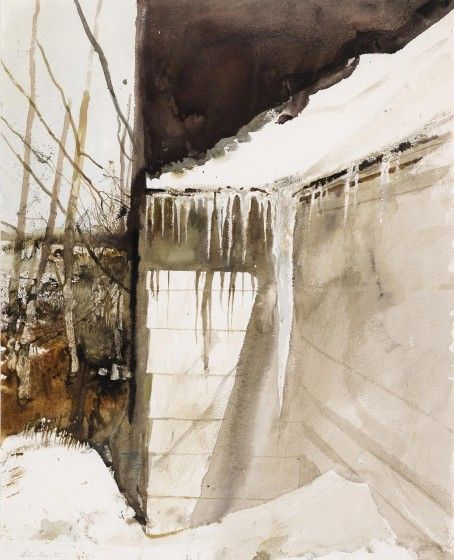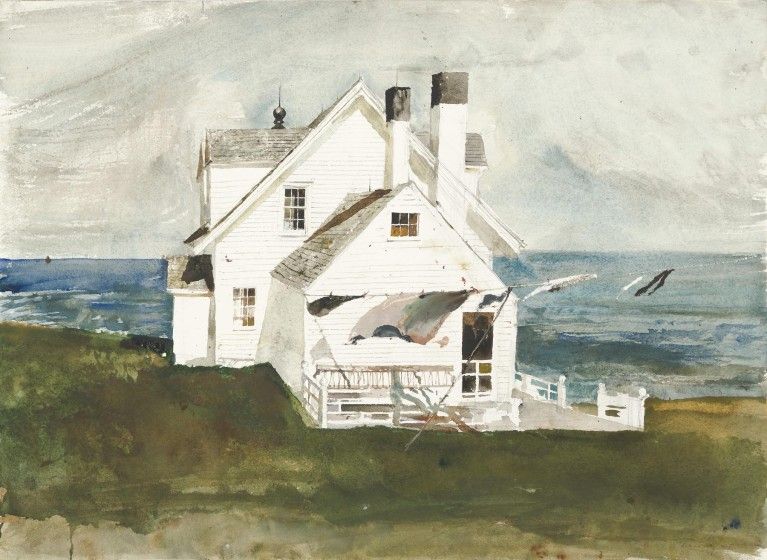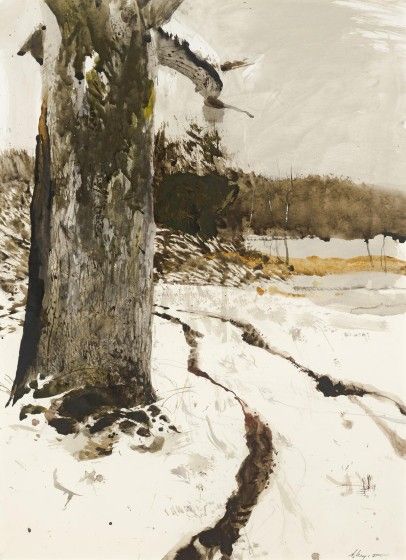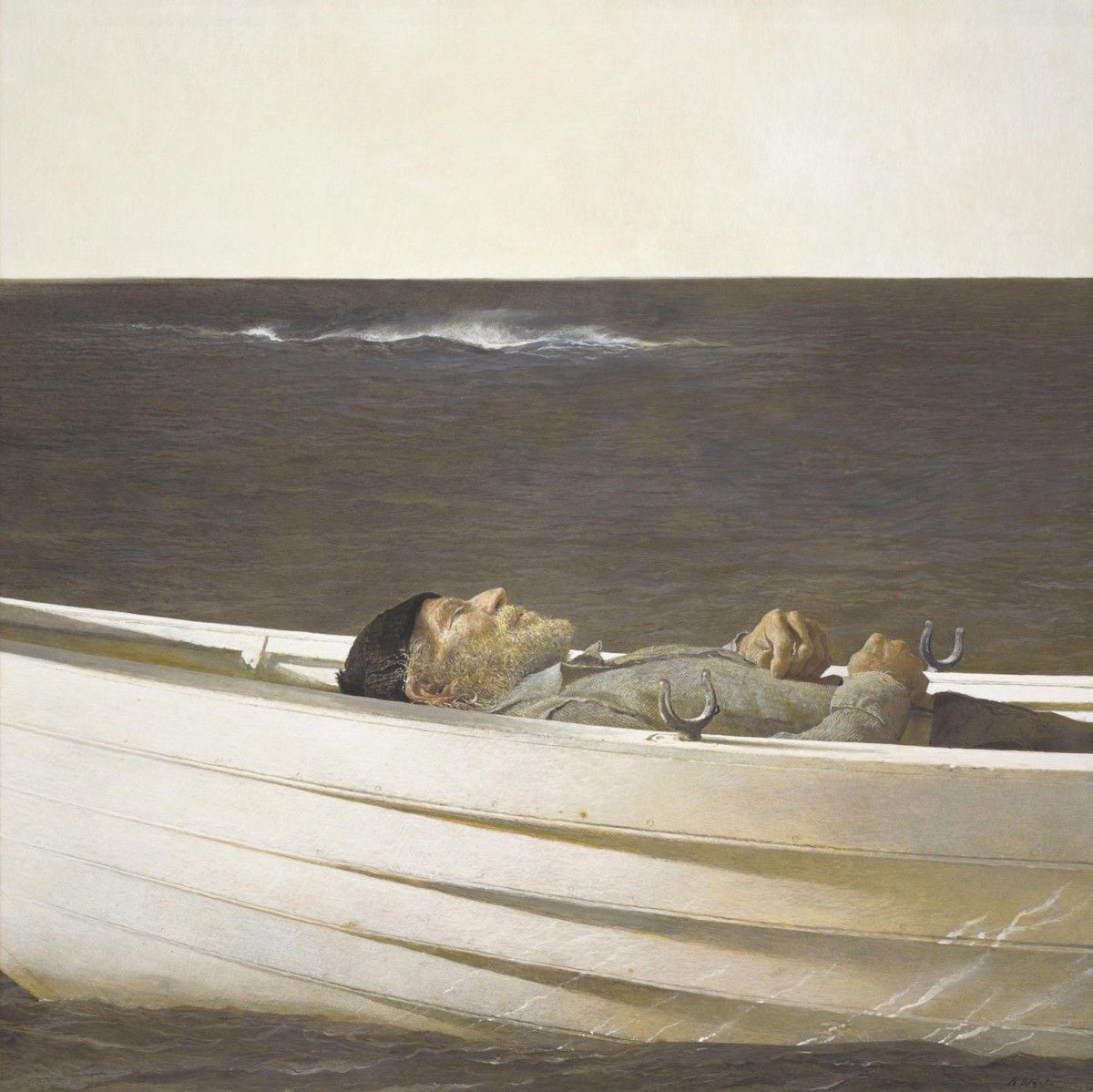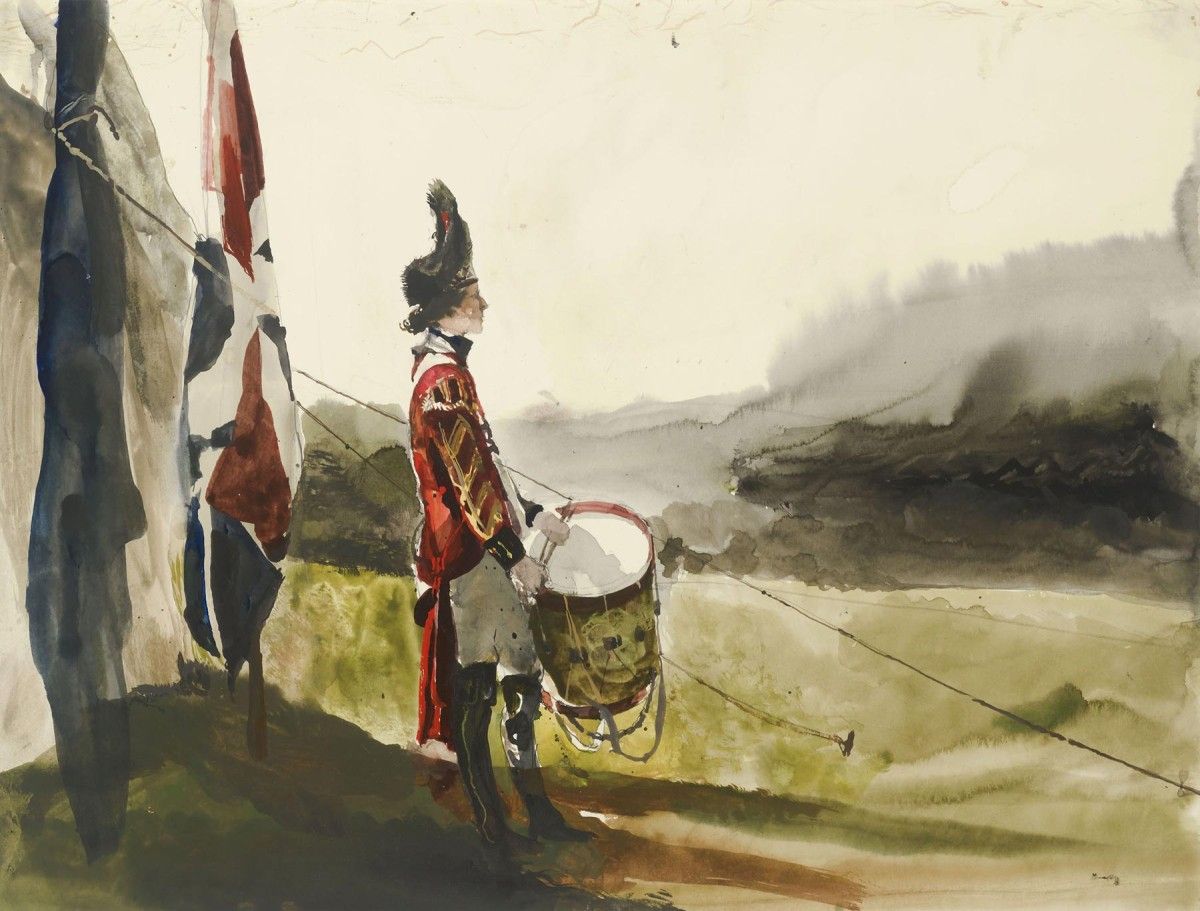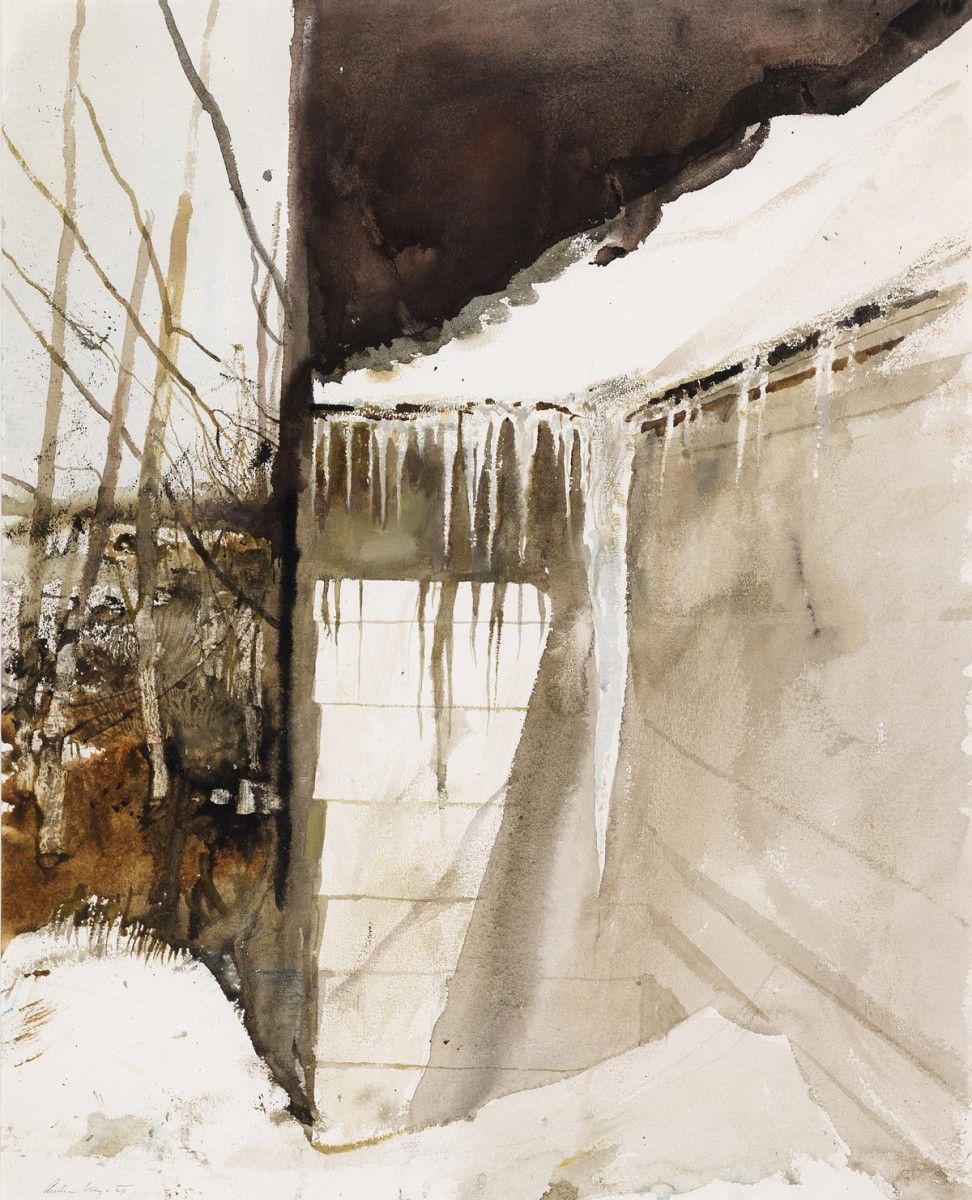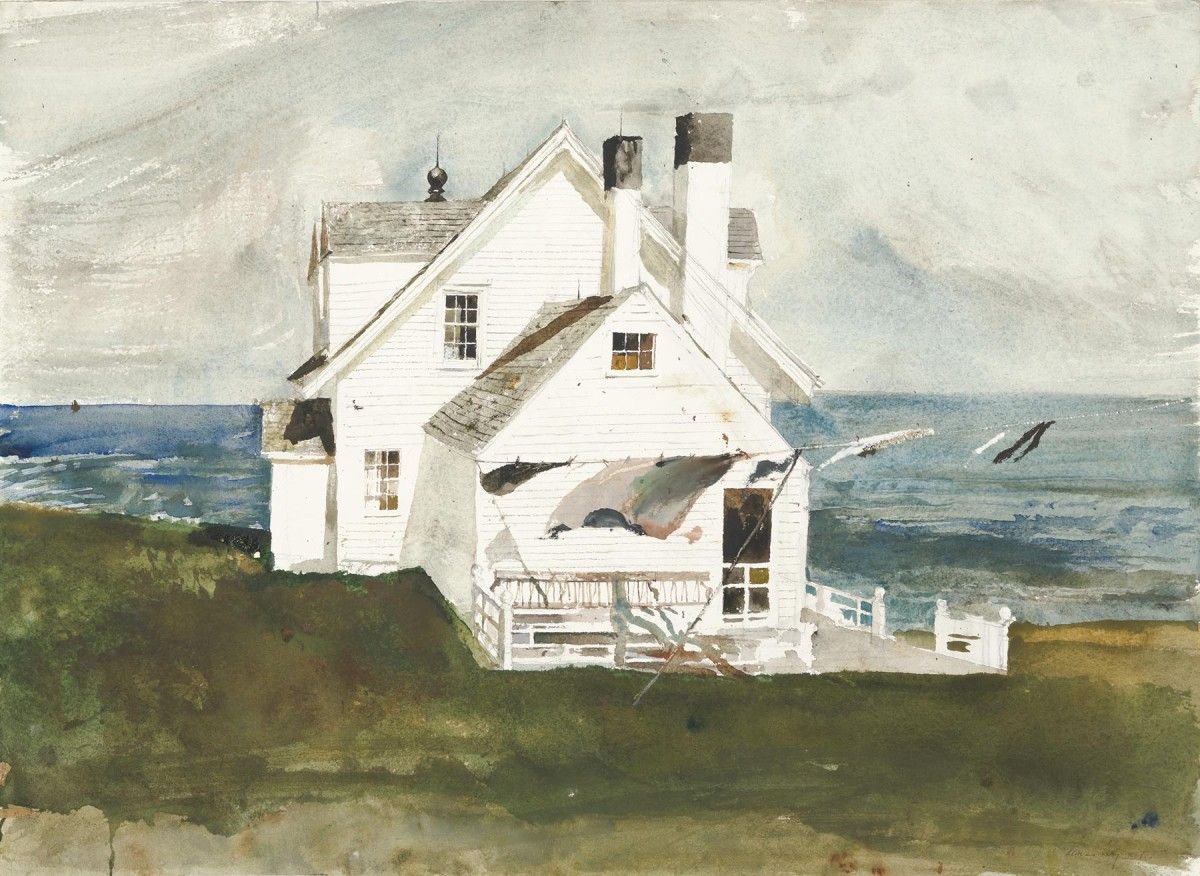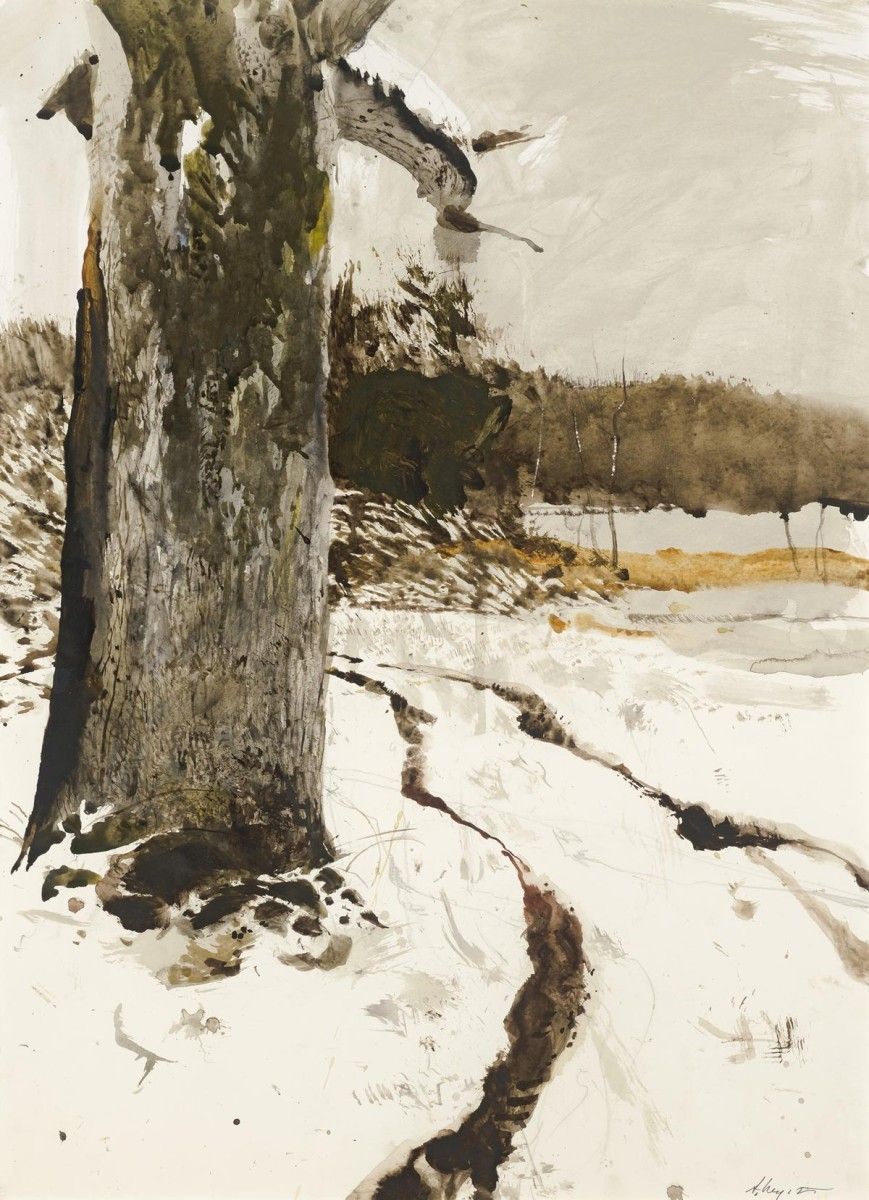What can we learn from focusing on one year in a creative life? The latest collection exhibition from the Andrew & Betsy Wyeth Study Center centers on the many revealing episodes of 1982 in the career of Andrew Wyeth.
This year, in which the artist turned 65, can be understood as moment of transition into his late period. Some creative chapters closed, while others gained momentum that would carry on through his death in 2009. These included a break from the inspiration of his key model Helga Testorf and some of his first depictions of Ann Call; a growing body of work offshore on Southern Island, Maine; and a climactic confrontation with the imminent loss of his lifelong friend and model Walt Anderson in the iconic tempera Adrift. Other events of the year included the traumatic theft of a number of artworks from the family home in Pennsylvania, headline grabbing sales of his works on the art market, and the refinement of a sophisticated art reproduction enterprise to meet popular demand, even as art critics were not always so enthusiastic.
Andrew Wyeth: 1982 debuted at the Farnsworth Art Museum in 2024 and draws on the depth of the Wyeth Foundation collection, which is managed by the Brandywine. Many of the works on view, which trace the rhythms of this key year from Pennsylvania to Maine and back again, have never before been exhibited. Visitors will take away insights into how a practice changes as an artist confronts his own mortality, the fundamental role that Betsy James Wyeth played in managing her husband’s work, and the seasonal workings of a creative process amidst world events of the period.
